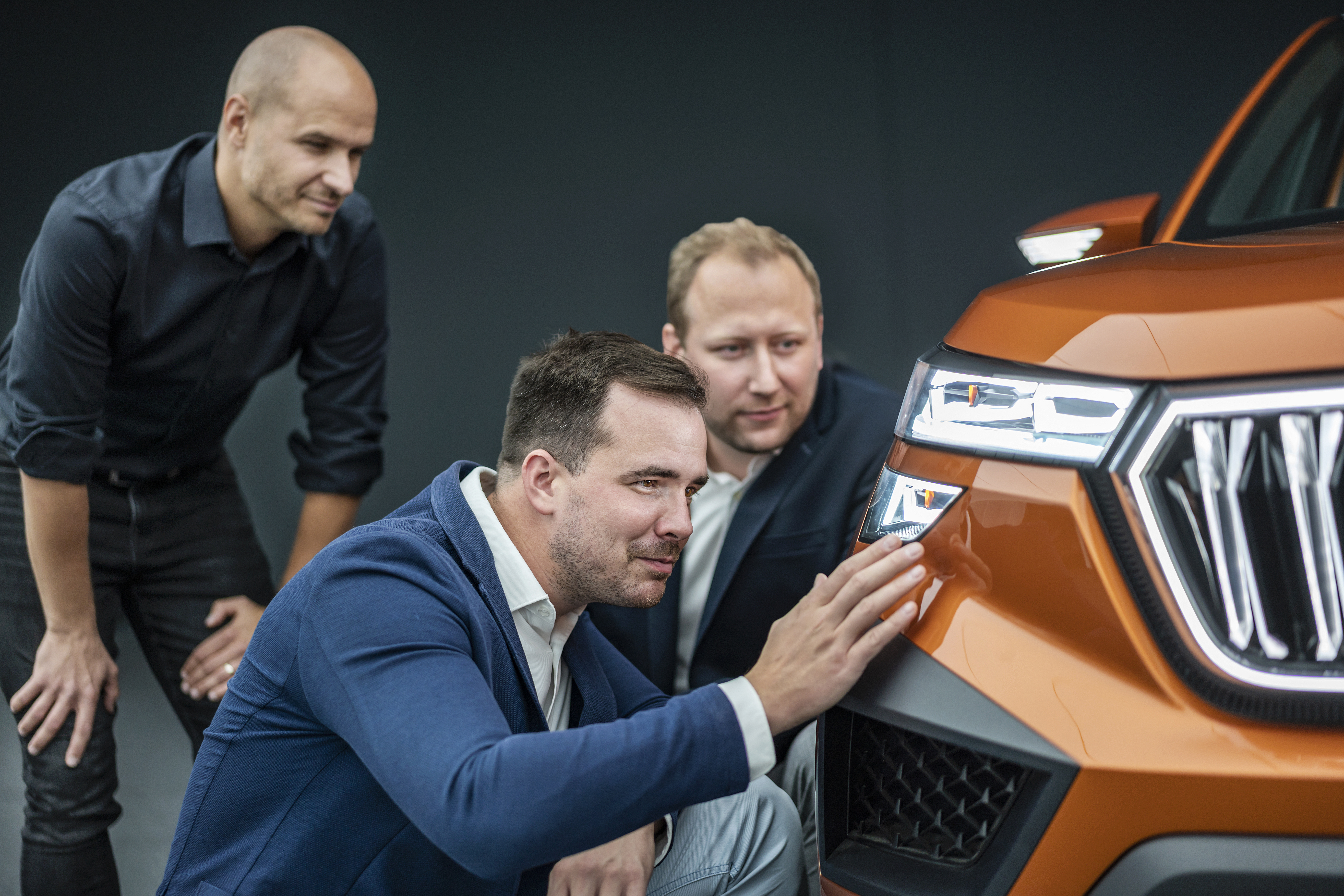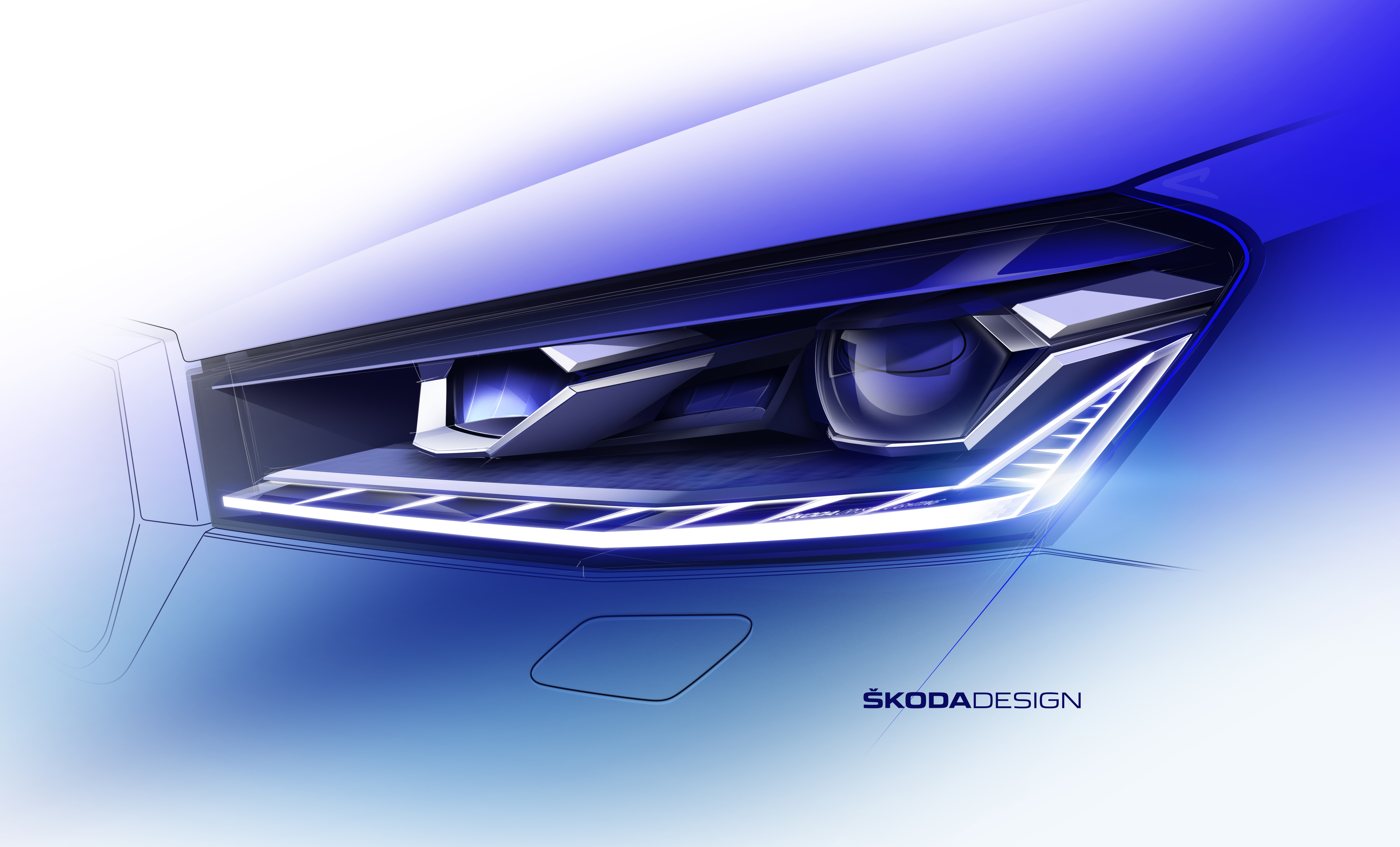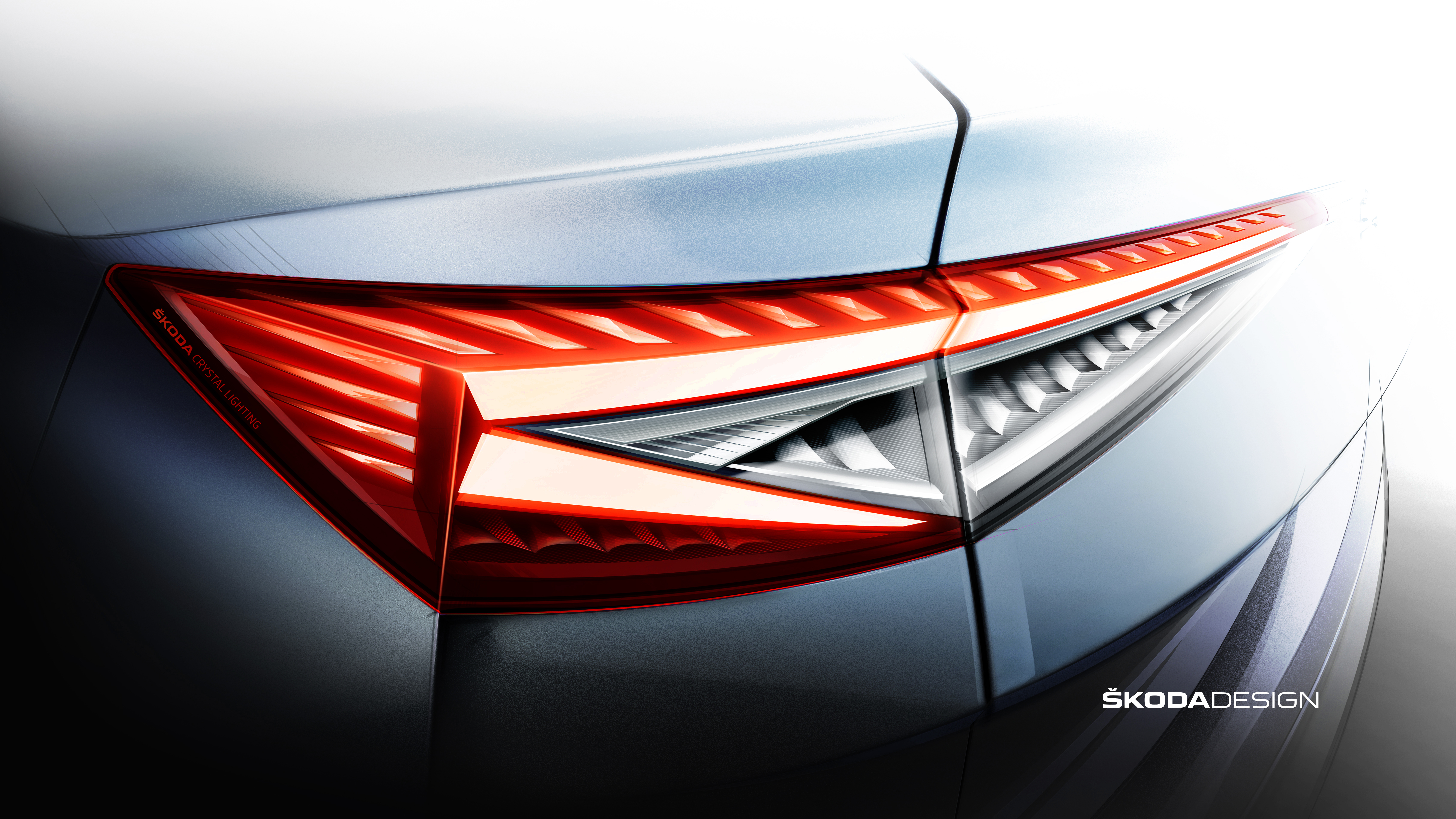The road to the future
Another example of a successful project is the illuminated Crystal Face radiator grille, which can be ordered by buyers of the ŠKODA ENYAQ iV electric car. “The idea originated in our design workshop, and we gradually developed it in cooperation with our innovation incubator until it reached a form where we could clearly say that it was a feasible and affordable solution,” says Petr Nevřela, the author of the design for this unique grille. In this respect, ŠKODA is among the pioneers of one of the trends that the car lights designers believe is coming in the near future. “Light will play an increasingly important role in car design, and the trend will be for the front and rear of the car to be illuminated,” says Petr.
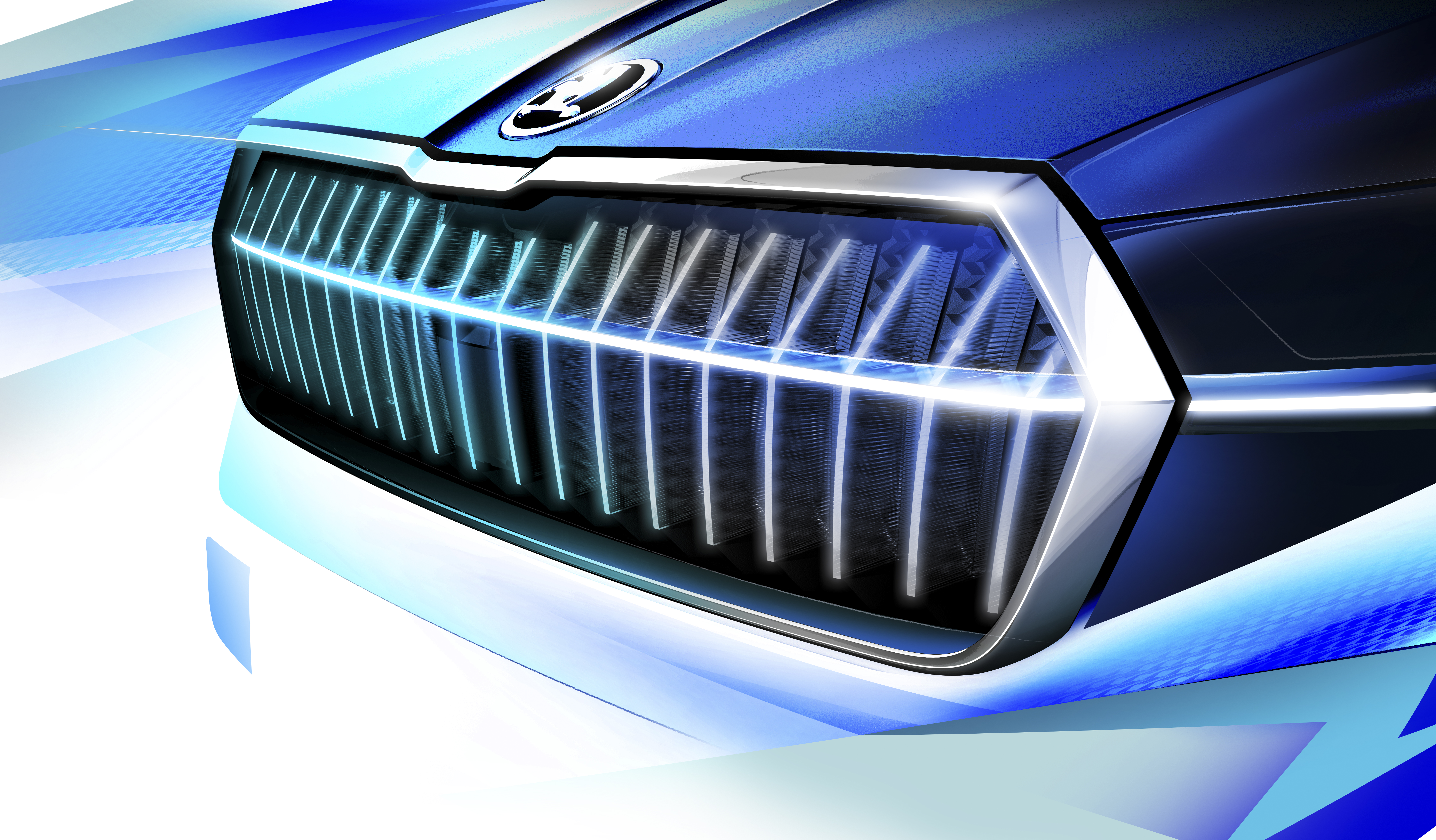 Sketch of Crystal Face, the symbol of the ENYAQ iV model
Sketch of Crystal Face, the symbol of the ENYAQ iV model
The various elements need to be combined in a way that looks harmonious. This has been done perfectly in the case of the ENYAQ iV, according to Martin Paclt. “Petr did the Crystal Face, and I worked on the headlights, which we managed to imbue with the character of glass,” says Martin. The car’s headlights have a stylised arrow inside, which looks great both in daylight and at night. Petr Nevřela points out that the headlights of the latest-generation ŠKODA FABIA also have the crystalline design. “We have successfully applied our distinctive design language to this basic model as well,” says Petr, adding that the complete switch to LED technology has made this possible.
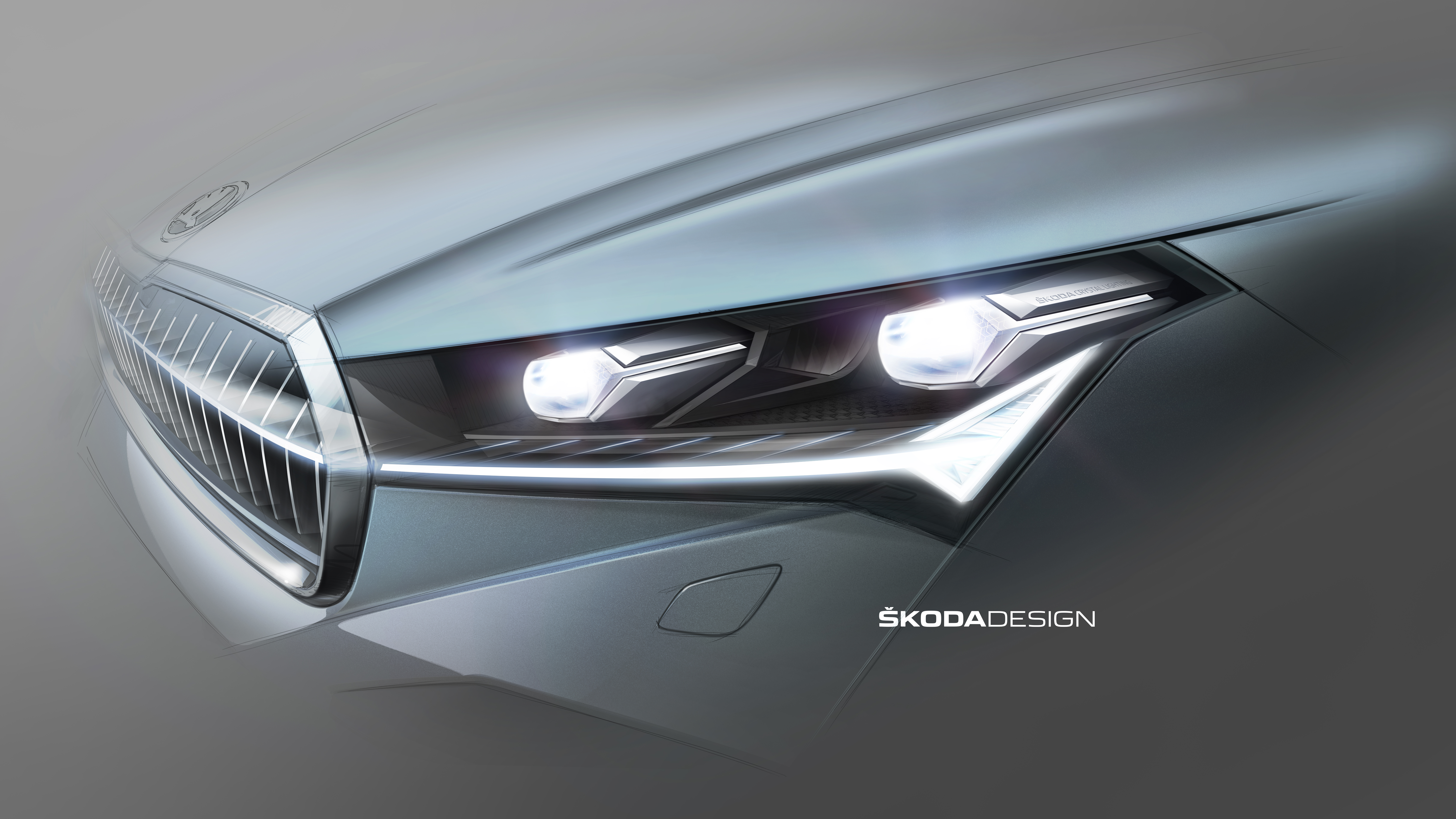 Sketch of the headlight of the ŠKODA ENYAQ iV with the stylised internal arrow
Sketch of the headlight of the ŠKODA ENYAQ iV with the stylised internal arrow
This is the dominant trend in today’s lighting technology. “Lights as functional jewellery will also become a means of communication in the future,” says Petr. This will be especially true in the era of autonomous cars, which will communicate with their surroundings – for example, with pedestrians – via advanced front lighting areas. “High-end LED lights will be more like specific displays with huge light output,” says Petr. So one day designers will have to address the possibilities of individualisation and communication in addition to the design of the lights and light signature. ŠKODA’s lighting design team is thus looking to a future that was science fiction not so long ago.




